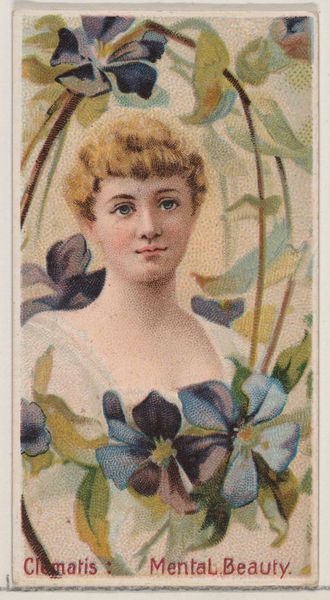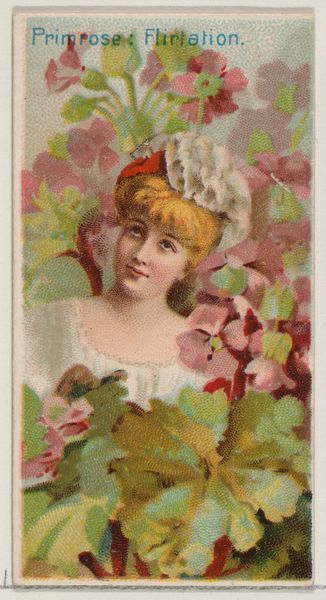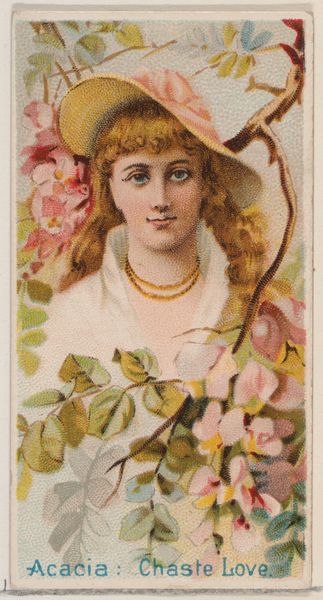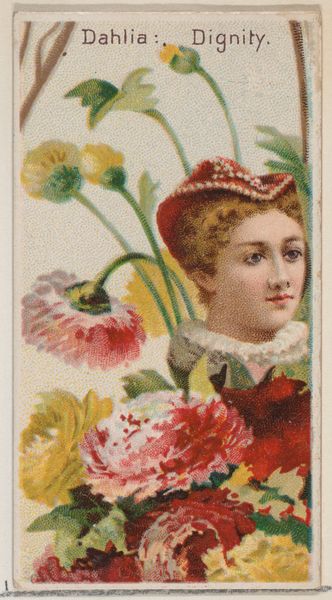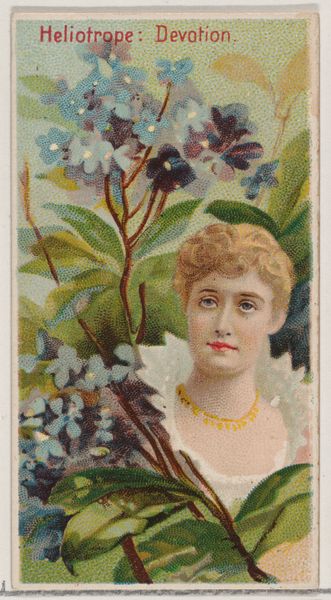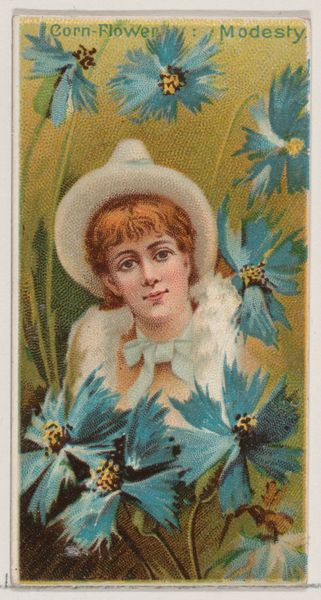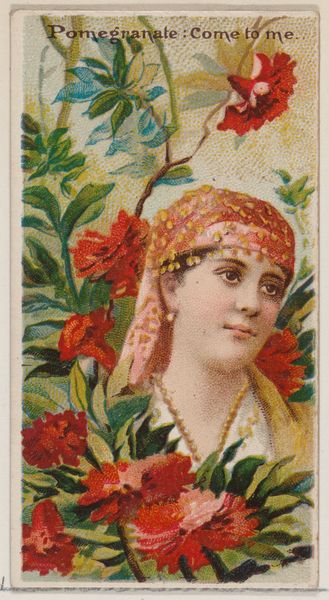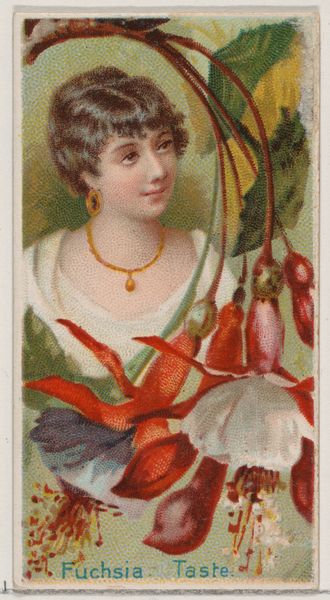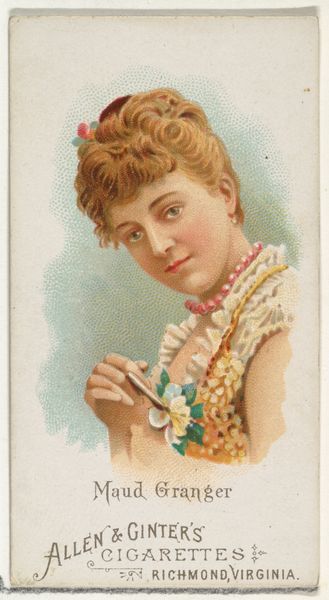
Artist's pallette, from the Novelties series (N228, Type 5) issued by Kinney Bros. 1889
0:00
0:00
drawing, graphic-art, print
#
portrait
#
drawing
#
graphic-art
# print
#
figuration
Dimensions: Sheet: 2 7/8 × 1 9/16 in. (7.3 × 4 cm)
Copyright: Public Domain
Curator: Here we have a print from 1889, a trade card created by the Kinney Brothers Tobacco Company. Part of their "Novelties" series, this particular piece is titled "Artist's Palette." Editor: It’s really quite charming. A demure woman gazes downwards amidst floral flourishes. The colour palette adds a creative touch, even if it feels almost incidental. It evokes a sense of idealized femininity, almost sentimental. Curator: That feeling of sentimentality would be by design. Trade cards were enormously popular, meant to be collected, traded, and used in advertising. So the images had to be immediately appealing. What do you make of the symbolic connection between the woman, the flowers and the artist's implements? Editor: Well, flowers often signify beauty and delicacy. Placing a woman alongside them reinforces those qualities, conforming to societal expectations. The palette seems almost secondary, used more to embellish the scene rather than signify genuine artistic pursuit. This makes me wonder about who this image was actually targeted towards in terms of tobacco use. Was it considered palatable for consumption by women too? Curator: An interesting point! These images absolutely reinforced gender roles. But perhaps the presence of the artist's tools lends an aspirational quality. Then, of course, you have the formal aspects: the artist utilizes this tight but decorative, frame-like construction, which does, I agree, heighten the emotionality of the subject. Editor: Definitely, the visual elements are very much directed at mass appeal, reinforcing the commodity fetish and sentimentalized view of art and femininity, obscuring issues of labour involved in either creation, from art to tobacco. This isn’t about challenging perceptions, but reinforcing norms. It’s lovely but pointedly un-provocative. Curator: I think that's fair. Considering it within the context of advertising certainly casts light on how it operated culturally. Editor: Precisely! Looking at this not simply as an artwork, but a commodity with historical fingerprints on it, transforms our interpretation entirely.
Comments
No comments
Be the first to comment and join the conversation on the ultimate creative platform.

